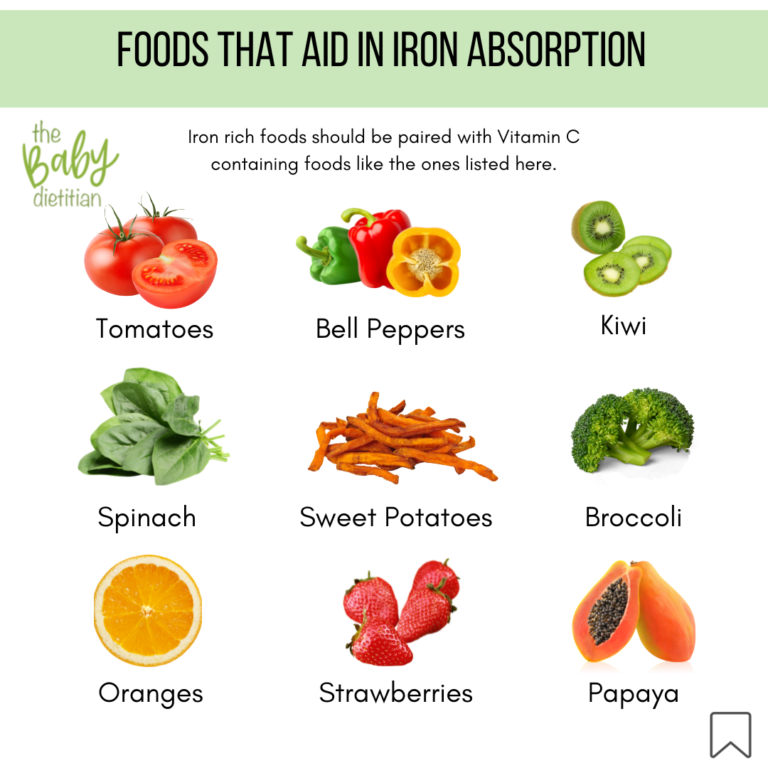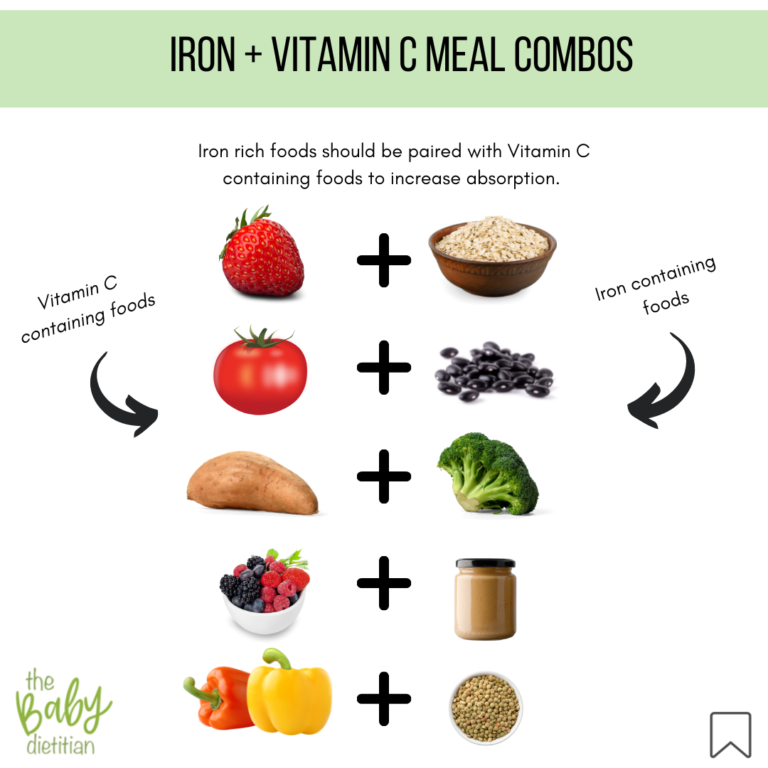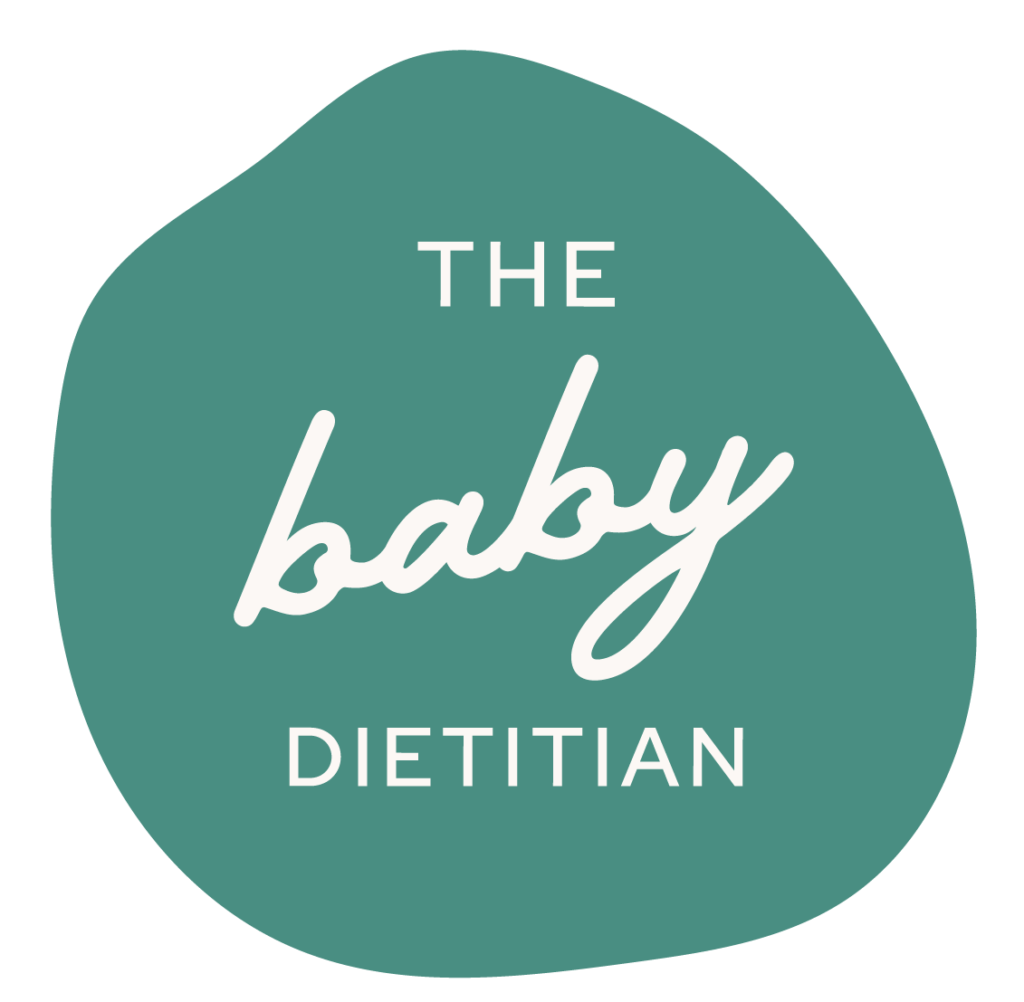
Some of the links below are affiliate links. At no additional cost to you, I will earn a commission if you click through and make a purchase.
The Need for Iron Rich Foods When Starting Solids
Iron plays an important role in brain development and is necessary for adequate delivery of oxygen to tissues and cells throughout the body.
The original iron stores of a full-term healthy baby, combined with iron in breast milk, are usually enough to keep a baby’s hemoglobin levels within the normal range up to the first six months. However, around 6 months of age, the iron stores that were accumulated in utero are depleted, hence requiring complementary food to be introduced to aid in meeting iron needs.
Why is iron important?
“Iron is necessary to make hemoglobin, which carries oxygen in red blood cells to all parts of the body. Iron also supports proper neurological development during infancy and early childhood.” –Centers for Disease Control and Prevention (CDC)
Iron is an important mineral that is a major part of hemoglobin, a protein in red blood cells that carry oxygen from our lungs to the rest of our body. If there isn’t enough iron in the body, there aren’t enough healthy red blood cells to transport oxygen. This can lead to iron deficiency anemia, which can cause fatigue and lightheadedness.
“Iron deficiency in the first two years may cause future delays in intellectual, behavioral, and motor development.” -American Academy of Pediatrics Committee on Nutrition
Iron deficiency is the most common nutritional deficiency in children. The global prevalence of anemia in 2010 was 32.9 percent, with the highest burden in children less than five years of age.
| AGE | MILLIGRAMS IRON/DAY NEEDED |
|---|---|
| 7 – 12 months | 11 milligrams |
| 1 – 3 years | 7 milligrams |
There are two forms of iron in food: heme iron and non-heme iron.
Heme iron is available in animal foods and is absorbed at about 25% efficiency (though some studies report 40% efficiency).
Non-heme iron is the form found in plant foods and is absorbed poorly, generally ranging from 2-13%.
Iron absorption from whole grains, for example, is extremely low at only 0.3% to 1.8%. This is due to the presence of fiber, phytic acid, and other anti-nutrients that interfere with the absorption of minerals from whole grains and legumes.
But did you know there is a way to help our bodies better absorb non-heme iron? We can increase iron absorption by pairing non-heme iron foods with vitamin C containing foods like bell peppers, brussels sprouts, lemons! Read on to find a list of quick recipes for pairing iron with vitamin C foods.

Iron Disclaimers
- You do not need to be counting the exact amount in milligrams of iron your child is consuming a day – this is wearisome and stressful. The main goal is to provide a variety of foods which includes high iron foods!
- The current guidelines for iron are 11 mg/day for infants 6-12 months old, but they are just guidelines. The recommended dietary allowance (RDA) is the average daily dietary intake level that suffices to meet the nutrient requirements of nearly all (97–98%) healthy persons of a specific sex, age, life stage, or physiological condition (such as pregnancy or lactation). The RDA is a nutrient intake goal for planning the diets of individuals. The explanation of RDA level just shows that there is not ample evidence to really determine what the desired amount is so we are almost using a guesstimate/average with the information we have available.
FAQ
1. How can I increase my baby’s iron stores before starting solid food?
Delayed cord clamping is a common practice that can be requested after birth that aids in the newborn receiving extra blood resulting in a higher iron level.
Research has found that waiting just 2-3 minutes after birth before clamping the cord allows up to 50% more blood volume to pulse from the placenta to the newborn. A 2-minute delay has been shown to result in higher total body iron and plasma ferritin (reflecting iron storage) at 6 months of age, equating to about an extra month’s worth of iron stores. Certainly other mammals do not rush to clamp the cord immediately after birth and therefore also get that extra dose of iron to the baby before cutting her off from mom’s supply.
Check out Dr. Allen Greene’s resources and education on the importance of delayed cords clamping here.
2. Why does breast milk not have enough iron to sustain my baby if breast milk is perfectly made?
According to the Womanly Art of Breastfeeding, there is not a lot of iron in breast milk, yet there is not supposed to be, as it is more completely absorbed from breast milk than in supplements or formula. Breast milk is in fact low in iron, but more than 50% of it is absorbed by infants!
The reason iron levels are low in breast milk is to reduce the amount of free iron in the GI tract that can feed harmful bacteria. Breast milk contains a protein called lactoferrin, which binds to any extra iron that the baby cannot use. This prevents iron from feeding the “bad bacteria”, which can result in GI infections. Breast milk is perfectly created to avoid excess iron!
New research coming out is also showing that breastfed babies from healthy, non-deficient mothers receive plenty of iron through natural mechanisms. Iron supplements are generally not recommended unless deemed necessary by a healthcare professional.
Quick Tip: Natural occurring iron in food sources does not have the annoying side effect of constipation that iron supplements normally cause.
3. What about baby formula with iron?
Formula can provide adequate iron intake for babies, but such iron is less absorbable compared to the iron naturally present in breast milk and in foods. There is still a need for complementary foods to be introduced at 6 months to help establish healthy dietary eating habits, ensure iron needs are being met, provide allergen exposure, and prevent picky eating.

Takeaway: Regardless of whether your infant is exclusively breastfed or not, it is recommended to introduce iron-rich foods at 6 months of age depending on their developmental readiness for trying solid foods. Most infants who breastfeed get enough iron from their mother up until around 6 months of age when their iron stores (that they had accumulated during utero) may then become depleted. This is why it is important to use the introduction of complementary foods at six months to incorporate adequate iron into the infant’s diet.
Iron Rich Foods For Babies
Here is a list of high iron foods that can help you decide which foods to introduce to promote iron levels! Pureed meats and iron-enriched cereals are the most common iron-rich foods that are introduced. Other high iron foods include:
- Eggs
- Sweet Potato
- Beans
- Poultry
- Red Meat
- Lentils
- Tofu
- Peas
- Fortified Oatmeal
- Chicken Liver / Organ Meats
- Sardines
- Oysters
- Clams
- Turkey Legs
- Tuna
- Lamb
- Shrimp

Examples of Iron Content In Various Foods:
- 3/4 cup of Cheerios: 6 mg
- 1 serving fortified infant oatmeal: 5 mg
- 4 ounce hamburger: 5 mg
- 2 ounces Banza Chickpea Pasta: 4 mg
- 2 ounces Barilla Red Lentil Pasta: 3 mg
- 1/2 cup of lentils: 3 mg
- 1 cup prune juice: 3 mg
- 1/2 cup dried apricots: 1.7 mg
- 1 egg: 1.4 mg
- 1/2 cup raisins: 1.5 mg
- 1 slice whole wheat bread: 0.7 mg
- 1-ounce hummus: 0.7 mg
- 1/2 cup edamame beans: 0.5 mg
Baby Food Pouches that Contain Iron:
Cerebelly and Serenity Kids Pouches are great pouches to use occasionally as well due to their high iron content. Most baby food pouch brands on the market contain only fruits and vegetables with zero or minimal iron per pouch. Cerebelly’s white bean pumpkin apple puree contains a whopping 3.2mg/iron per pouch and Serenity Kids pouches all contain at least 1mg/iron per pouch! These pouches are also classified as Clean Label Approved.
Serenity Kids: Use code THEBABYDIETITIAN for 15% off first time orders.
Cerebelly Kids: use code THEBABYDIETICIAN for 35% off first time orders.
Some of the links in this blog post are affiliate links. At no additional cost to you, I will earn a commission if you click through and make a purchase.
Quick Recipes with Vitamin C + Iron Rich Foods
1. White bean, lemon and olive oil mash/hummus (2 tablespoons = 2mg of iron)
- Mash 1/2 cup of cooked or canned and rinsed beans with 1 teaspoon of lemon juice and olive oil each.
- Thin with water until it is the consistency of hummus.
- Let your baby go messy self feeding with his fingers or preload a spoon and give it to him.
2. Fortified cereal sprinkled on finger foods (1 tablespoon baby cereal = 1.2mg iron)
- Even if you avoid spoon feeding your baby, there is a way to use its nutritional benefit from iron fortification.
- Sprinkle some cereal on slippery finger foods like ripe pear, banana, mango or avocado.
- This will not only boost iron but also make it easier for the baby to grab and hold the food.
3. Egg omelet, cut into strips, served with tomato sauce (1 egg yolk = 0.5mg iron)
- Tomato sauce contains plenty of vitamin C. Just make sure to choose a low sodium version for your baby.
- You can also make your own by cooking on low heat some canned chopped tomatoes, chopped onions, garlic and herbs.
- Cook an omelet on a small skillet, cut it into graspable strips and serve to your baby.

Here are a few more tips that can help increase iron for your baby:
- Cook with a cast iron skillet. This may increase the iron content of the foods being prepared. This is a great tool to use if you are concerned that your little one is not eating enough high iron foods.
- The Lucky Iron Fish® is a simple, reusable and effective cooking tool that adds extra iron to your daily foods or drinks. It is an affordable solution, especially for those with iron deficiency anemia. You can purchase this on my amazon list linked here.
- Garlic, due to its unique compounds, has now been shown to enhance iron absorption as well when cooked with iron rich foods.
If you need more resources on how to safely prepare high iron foods for babies or ideas for balanced meals for babies, check out our 101beforeone starting solids book! Our comprehensive guide to starting solids with baby-led feeding outlines everything you need to know in a simple and easy-to-follow format. Plus, we teach you how to prepare 101 different foods for baby and provide over 150 family-friendly recipes.
Want to ensure that you are educated on starting solids to avoid iron deficiency and more? Come join my Starting Solids 101 Course to optimize nutrition and create a healthy relationship with food from the start. Has your child already been diagnosed with iron deficiency? I would love to help support you and provide an individualized plan to increase iron intake, contact me here if you need the guidance of a pediatric dietitian.
You can find all of my services here!

Cinthia Scott is a Registered Dietitian (RD) and International Board Certified Lactation Consultant (IBCLC) , with over 7 years experience in the field of dietetics. Cinthia focuses on ensuring optimal nutrition in the first 1000 days of life to ensure optimal growth and development as well as set the stage for long-term health. Cindy is an author, starting solids expert, and advocate for caregivers receiving evidence based education and support surrounding breastfeeding and starting solids.
Cinthia is co-author of the 101beforeone Starting Solids Book, “101beforeone -baby-led feeding cookbook,” and is the founder and owner of Cinthia Scott RD LLC which is her private practice built to provide virtual 1:1 services for caregivers surrounding infant nutrition, toddler nutrition, and breastfeeding support. Cinthia is also the creator of the Starting Solids 101 Program which provides caregivers 1:1 support from a Pediatric Dietitian on how to provide optimal nutrition from the start and create healthy eating habits that will last their whole lifetime. To work with Cinthia, you can access her services here.
Cinthia provides tons of free information for parents on her social media accounts as well.
- Instagram: @The.Baby.Dietitian
- Tiktok: @The.Baby.Dietitian


This Post Has 2 Comments
Pingback: Balanced Meal Combinations for Baby
Pingback: Unpacking Fat and Cholesterol in Infancy and Toddlerhood